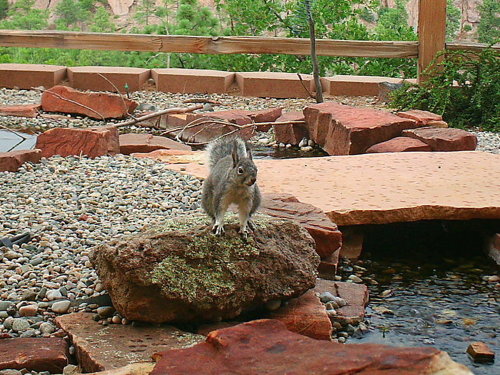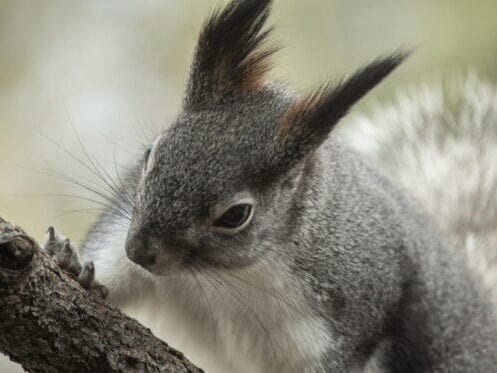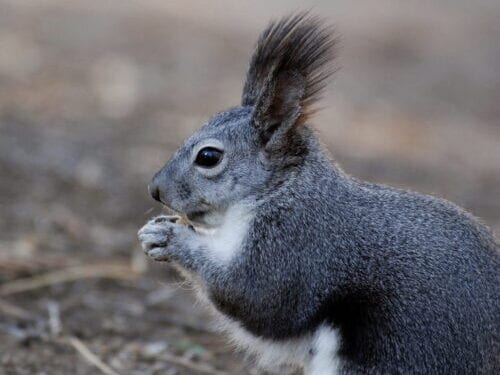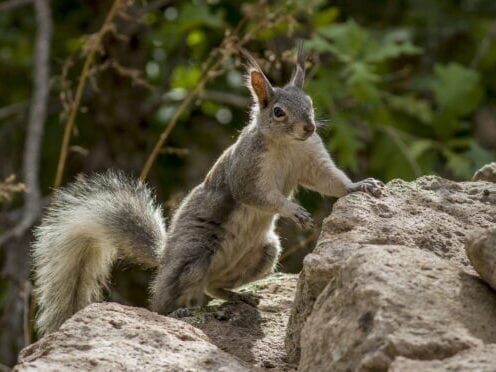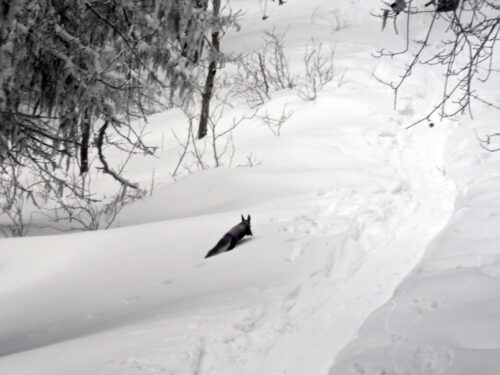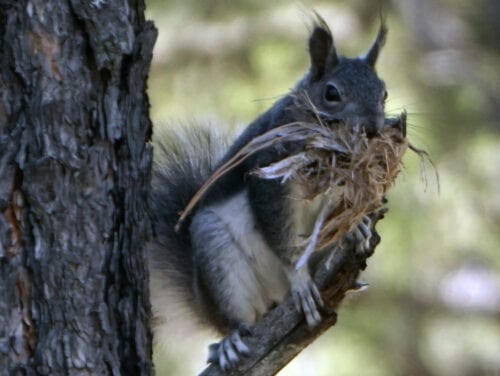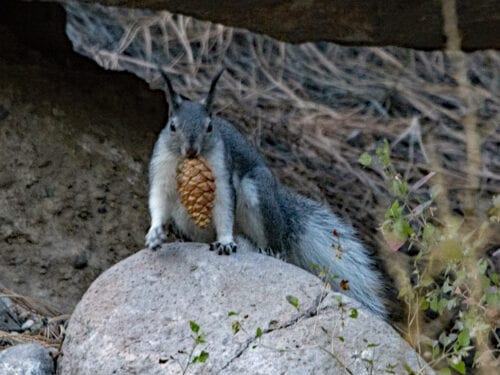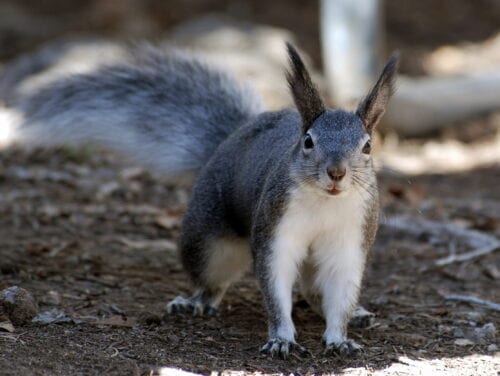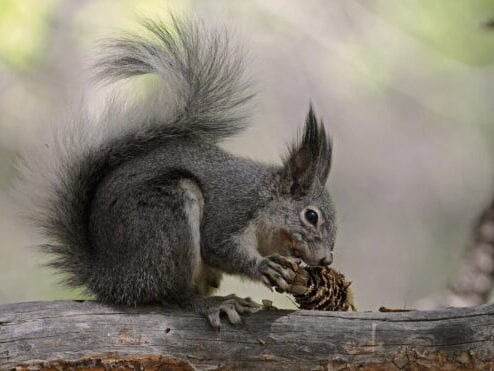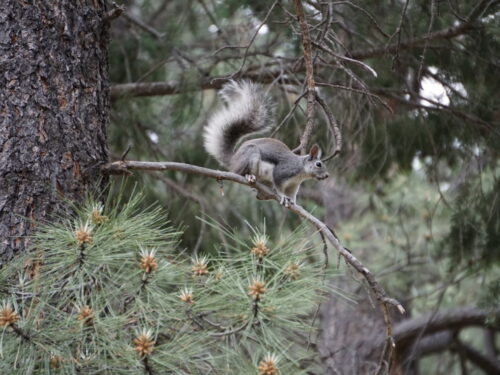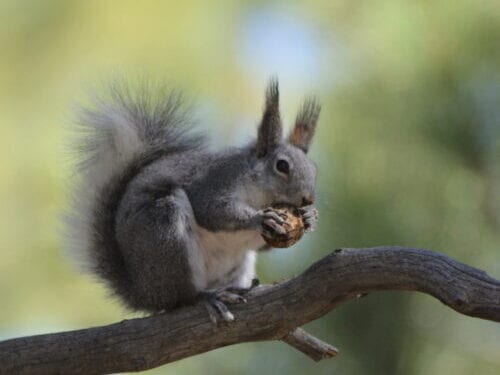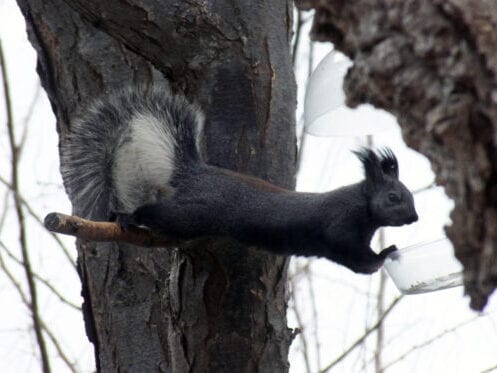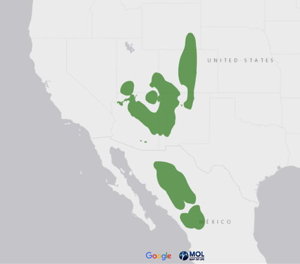Abert’s Squirrel
Scientific Name: Sciurus aberti
Type: Mammal
Family: Sciuridae (Squirrels, Chipmunks, and Prairie Dogs)
Size: 18 to 22 inches long with a tail of 7 to 9 inches
Weight: Up to 1.4 pounds
Life Span: May live as long as 7 years
Physical Description
Abert’s squirrels are rodents and, in many ways, look like typical tree squirrels with a bushy tail, soft gray or black fur mixed with white, and strong hind legs.
However, they are set apart from other tree squirrels by their prominent tufted ears. It should be noted that Abert’s squirrels shed their ear tufts during summer along with their winter coats.
Range and Habitat
Abert’s squirrels make their home in the mountainous areas of New Mexico, Colorado, Utah, Arizona, parts of Wyoming, and north central Mexico.
There are nine subspecies of Abert’s squirrel with non-overlapping ranges. Locally they are found at the the border of New Mexico and Colorado near ponderosa pines.
Diet
The ponderosa pine is the main source of food and shelter for Abert’s squirrels. During warm weather, they feed on cones, buds, and twigs from the trees. During the winter they typically eat its inner bark.
In addition, the squirrels occasionally supplement their diet with mistletoe and fungi as well as sap from the box elder tree.
Behavior and Social Life
Abert’s squirrels can be seen from sunrise to sunset. They are active all year round, although they may stay in their nests during cold weather. Unlike other squirrels, Abert’s squirrels do not store their food. In addition, they do not appear to be territorial.
They communicate by a variety of means. They have high-pitched barks, clucks, and squeals that are unlike that of other squirrel species. In addition, they use visual cues, touch, scents, and tastes for communication.
Life Cycle
Both male and female Abert’s squirrels have multiple mates. During the mating season, males display aggressive behavior towards each other and will chase females.
Abert’s squirrels may share a nest with each other. In addition, each individual squirrel may use more than one nest. Nests are located 20 to 40 feet above the ground in ponderosa pine trees and look like messy birds’ nests. The nests are lined with grass, leaves, feathers, and pine duff from the forest floor.
Abert’s squirrels give birth to 1 to 5 babies in late spring or early summer. The pups or kittens, as they are known, emerge from the nest in late summer to start to forage for food with their parents.
Title
Tracks
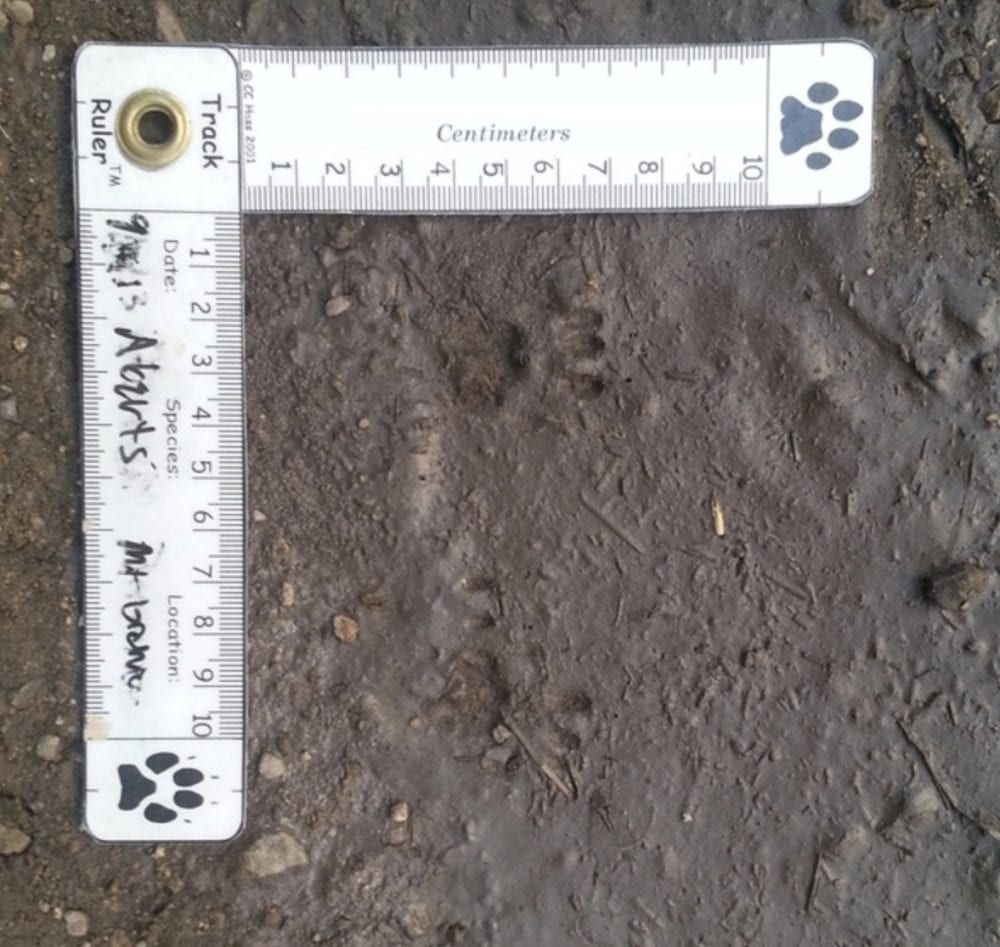
Skull
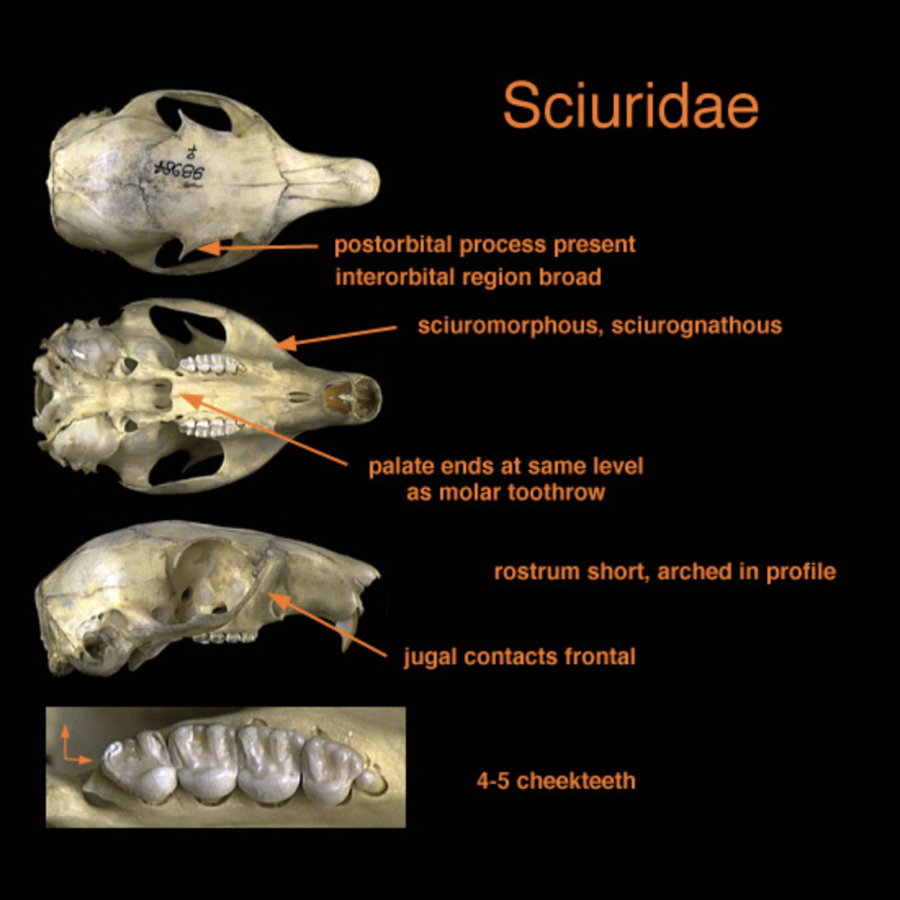
Clipped Twigs

Chewed Cone
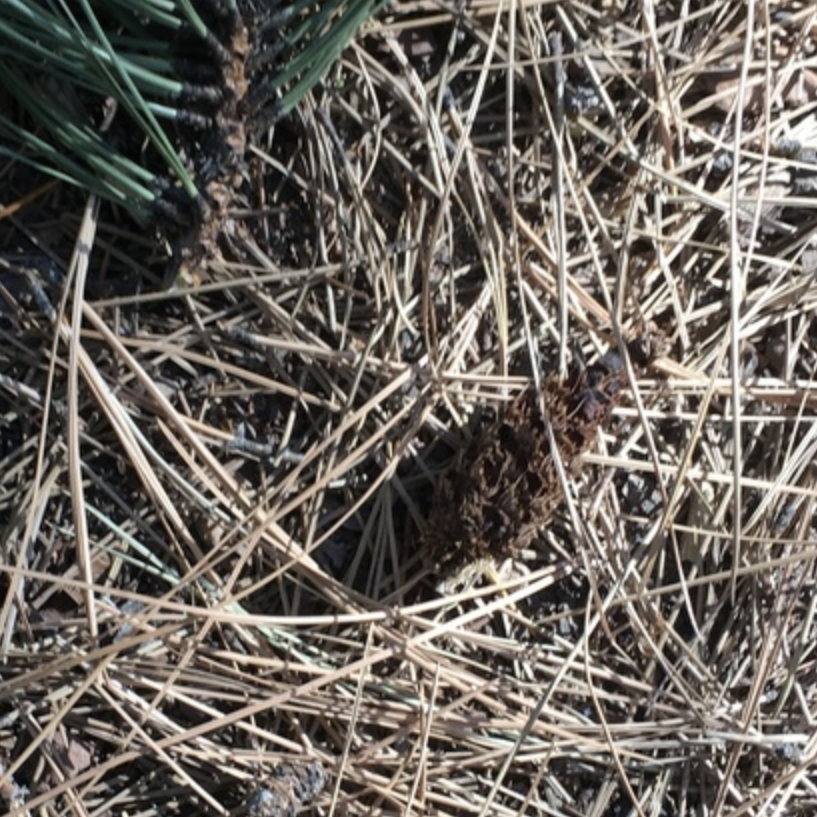
Ecological Role
Abert’s squirrels are a prey species and are hunted by northern goshawks, mountain lions, bobcats, and coyotes.
Abert’s squirrels rely heavily on ponderosa pines for all of their survival needs and therefore have a huge impact on these trees. For example, the squirrels dig up and eat the fungus that grows around the roots of the ponderosa pines. This aids the fungus by spreading its spores and increasing its growth; thus, helping the trees to maintain moisture in a dry environment.
Interactions With Humans
Abert’s squirrels are being studied intensively as a part of a research project that features them as a Management Indicator Species. This means they are being used to obtain population data important in understanding the impact of forest management practices on wildlife.
However, it should be noted that Abert’s squirrels are hunted in Colorado, New Mexico and Arizona and have been introduced into these areas for this purpose. It should be noted that the introduction of Abert’s squirrels has negatively affected the endangered Mount Graham red squirrel in Arizona.
Interesting Facts
- Abert’s squirrels are commonly known as tassel-eared squirrels for their ear tufts.
- Abert’s squirrels were named after John James Abert, an American naturalist who influenced the in mapping of the American West in the 1800s.
- Abert’s Squirrels have extremely flexible legs allowing them to quickly climb up and down trees.
- They can hang on a tree limb with just their rear feet while being able to use their front feet to handle food.
- Abert’s squirrels are extremely adaptable and are known to frequent bird feeders.
- These squirrels can use their bushy tails as an umbrella to shade them from the hot sun.
- Abert’s squirrels are most frequently seen at elevations of 6,000 to 9,000 feet.
- They put on extra weight in the fall to keep them warm in winter.
- Abert’s squirrels are solitary foragers, spending most of their time during the day looking for food.
- While males do not help to raise their young, they will guard their mates.

